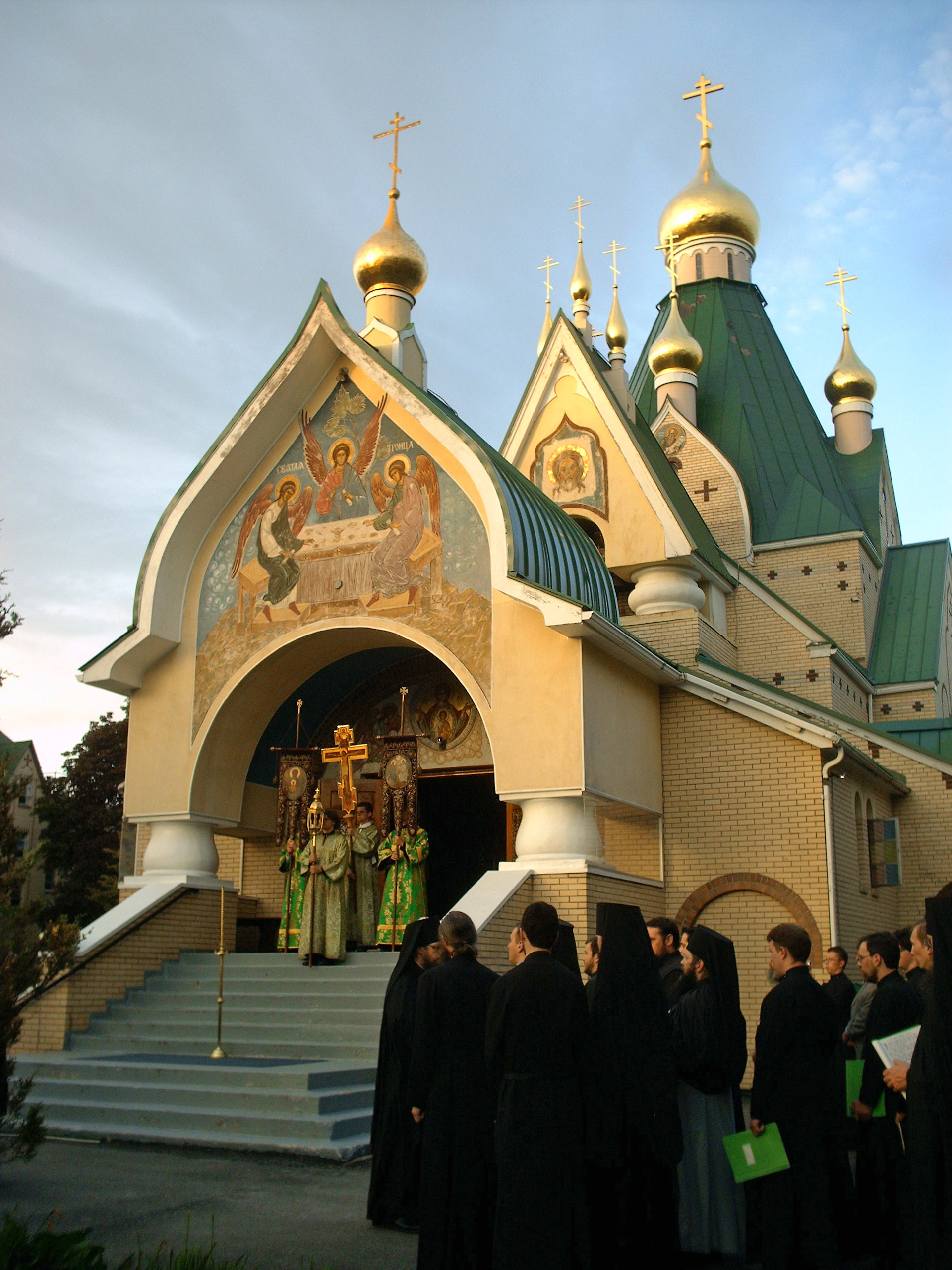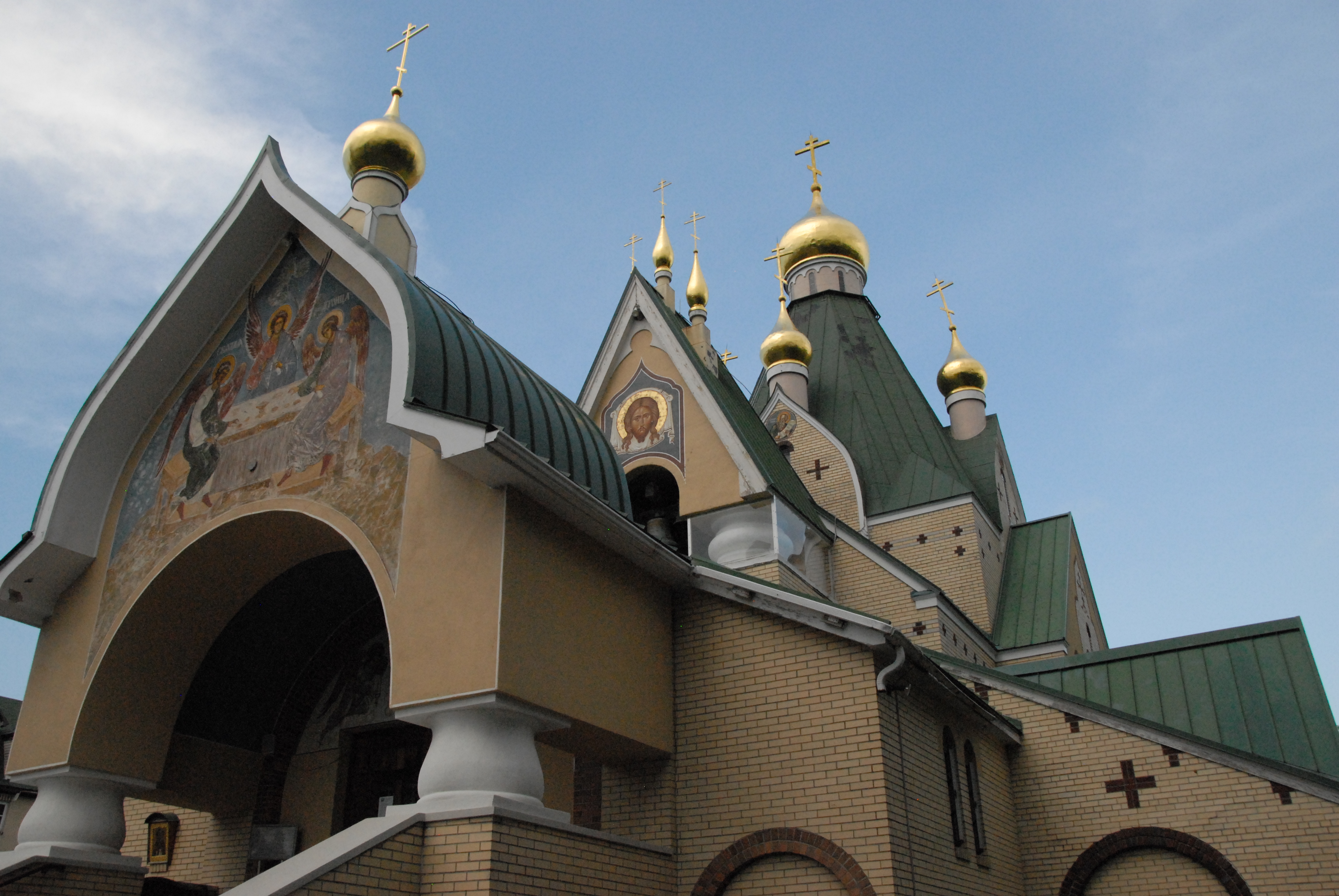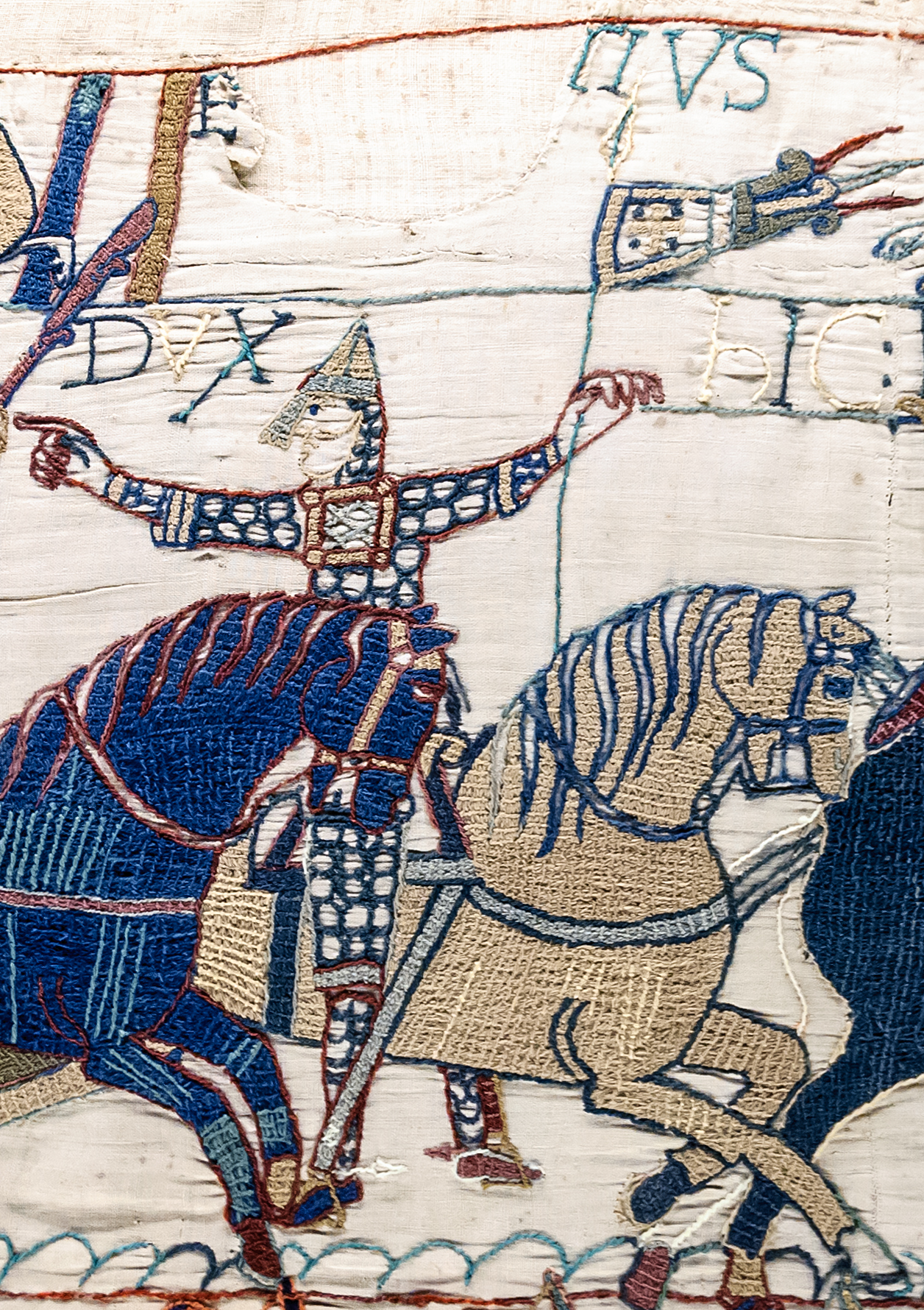|
Epitaphios (liturgical)
The Epitaphios (Greek language, Greek: Ἐπιτάφιος, ''epitáphios'', or Ἐπιτάφιον, ''epitáphion'', meaning "upon the tomb"; Church Slavonic language, Slavonic: Плащаница, ''plashchanitsa''; Arabic: نعش, ''naash'') is a Christian Church, Christian religious icon, typically consisting of a large, embroidered and often richly adorned cloth, bearing an image of the dead body of Christ, often accompanied by his mother and other figures, following the Gospel account. It is used during the liturgical services of Holy Saturday in the Eastern Orthodox Church, Eastern Orthodox and Byzantine Rite, Byzantine Eastern Catholic Churches, Catholic churches. The Epitaphios is also a common short form of the ''Epitáphios Thrēnos'', the "Lamentation upon the Grave" in Greek language, Greek, which is a major part of the service of the Matins of Holy Saturday (now typically performed the evening of Good Friday). Some Oriental Orthodox Churches (such as the Armenian A ... [...More Info...] [...Related Items...] OR: [Wikipedia] [Google] [Baidu] |
Epitaphios (Sergiev Posad, 15th C)
Epitaphios or epitaphius may refer to: * Epitaphios (liturgical) or ''epitaphion'', a cloth icon used during Holy Week in churches that follow the Byzantine rite * Funeral oration (ancient Greece) or ''epitaphios logos'' ** Gorgias#Epitaphios (or the Athenian funeral oration), Gorgias' text on the same See also * ''Epitafios'', an Argentine TV series {{disambig ... [...More Info...] [...Related Items...] OR: [Wikipedia] [Google] [Baidu] |
Theotokos
''Theotokos'' ( Greek: ) is a title of Mary, mother of Jesus, used especially in Eastern Christianity. The usual Latin translations are or (approximately "parent (fem.) of God"). Familiar English translations are "Mother of God" or "God-bearer" – but these both have different literal equivalents in , and Θεοφόρος respectively. The title has been in use since the 3rd century, in the Syriac tradition (as ) in the Liturgy of Mari and Addai (3rd century)''Addai and Mari, Liturgy of''. Cross, F. L., ed. ''The Oxford Dictionary of the Christian Church''. Oxford University Press. 2005. and the Liturgy of St James (4th century). The Council of Ephesus in AD 431 decreed that Mary is the ''Theotokos'' because her son Jesus is both God and man: one divine person from two natures (divine and human) intimately and hypostatically united. The title of Mother of God (Greek: ) or Mother of Incarnate God, abbreviated ΜΡ ΘΥ (the first and last letter of main two words in ... [...More Info...] [...Related Items...] OR: [Wikipedia] [Google] [Baidu] |
Holy Trinity Monastery (Jordanville, New York)
Holy Trinity Monastery (, ') is a male stavropegial monastery of the Russian Orthodox Church Outside Russia, Russian Orthodox Church Outside of Russia (ROCOR), located near Jordanville, New York. Founded in 1930 by two Russian immigrants, it eventually became a main spiritual center of Russian Orthodoxy in the West. The monastery is well known for its publishing work and for the attached Holy Trinity Orthodox Seminary, which has educated many clergymen in ROCOR and other Orthodox jurisdictions. Due to their closeness to the hamlet, both the monastery and seminary are often simply referred to as Jordanville. The monastery is dedicated to the Trinity, Holy Trinity, and its patronal feast day is Pentecost. The campus includes a museum that is open to the public. History Hieromonk Panteleimon (Nizhnik), after spending ten years at St. Tikhon's Orthodox Monastery near South Canaan Township, Wayne County, Pennsylvania, South Canaan, Pennsylvania, wanted to live a more rigorous monasti ... [...More Info...] [...Related Items...] OR: [Wikipedia] [Google] [Baidu] |
Jordanville, New York
Jordanville is a hamlet in the town of Warren, Herkimer County, New York, United States. Jordanville is in the northwestern part of Warren, at the intersection of New York State Route 167 and County Route 155. The community was settled by European Americans after the Revolutionary War and before 1791. Its name was derived from the nearby Ocquionis Creek, which was used by settlers for baptisms and likened by them to the Jordan River. History The hamlet was once served by the Southern New York Railroad, an electric trolley line that ran from Oneonta to Mohawk. Gelston Castle This castle was built in 1836 by Harriet Douglas Cruger, with stone sourced from Little Falls, New York. She had been inspired as a young woman by seeing Gelston Castle, owned by her uncle in Scotland, which she visited. Harriet Douglas was described as an independent and eccentric woman, who had her marriage bed sawed in half and used as two couches after an acrimonious divorce. She was profile ... [...More Info...] [...Related Items...] OR: [Wikipedia] [Google] [Baidu] |
Troparion
A troparion (Greek , plural: , ; Georgian: , ; Church Slavonic: , ) in Byzantine music and in the religious music of Eastern Orthodox Christianity is a short hymn of one stanza, or organised in more complex forms as series of stanzas. The wider meaning of troparion The word probably derived from a diminutive of the Greek ('something repeated', 'manner', 'fashion'), since the earliest function of the troparion was a refrain during the recitation of the cantica (biblical odes) and the psalms, as such the term was used as a synonym of . The early meaning of ''troparion'' was related to the monastic hymn book '' Tropologion'' or Troparologion. Hence its forms were manifold, they could be simple stanzas like apolytikia, theotokia, but also more elaborated homiletic poems like ''stichera'' composed in psalmodic hexameters (probably from ''stichos'', "verse"), or in a more complex meter like the odes composed in cycles called canon. Since these Tropologia in their earliest form ... [...More Info...] [...Related Items...] OR: [Wikipedia] [Google] [Baidu] |
Substrate (printing)
Substrate is used in a converting process such as printing or coating to generally describe the base material onto which, e.g. images, will be printed. Base materials may include: * plastic films or foils, * release liner * textiles, * plastic containers * any variety of paper (lightweight, heavyweight, coated, uncoated, paperboard, cardboard, etc.), or * parchment. Electronics Printing processes such as silk-screening and photolithography are used in electronics to produce printed circuit boards and integrated circuits. Some common substrates used are;Rogers & Plett, p. 162 * Glass-reinforced epoxy, eg FR-4 board * Ceramic-PTFE laminate, eg 6010 board * Alumina ceramic * Silicon * Gallium arsenide * Sapphire * Quartz Quartz is a hard, crystalline mineral composed of silica (silicon dioxide). The Atom, atoms are linked in a continuous framework of SiO4 silicon–oxygen Tetrahedral molecular geometry, tetrahedra, with each oxygen being shared between two tet ... Referen ... [...More Info...] [...Related Items...] OR: [Wikipedia] [Google] [Baidu] |
Embroidery
Embroidery is the art of decorating Textile, fabric or other materials using a Sewing needle, needle to stitch Yarn, thread or yarn. It is one of the oldest forms of Textile arts, textile art, with origins dating back thousands of years across various cultures. Common Embroidery stitch, stitches found in early embroidery include the chain stitch, Buttonhole stitch, buttonhole or blanket stitch, running stitch, satin stitch, and cross stitch. Modern embroidery continutes to utilize traditional techniques, though many contemporary stitches are exclusive to machine embroidery. Embroidery is commonly used to embellish accessories and garments is usually seen on quilts, clothing, and accessories. In addition to thread, embroidery may incorporate materials such as Pearl, pearls, Bead, beads, Quill, quills, and Sequin, sequins to highlight texture and design. Today, embroidery serves both decorative and functional purposes and is utilized in fashion expression, cultural identity, and ... [...More Info...] [...Related Items...] OR: [Wikipedia] [Google] [Baidu] |
Pietà
The Pietà (; meaning "pity", "compassion") is a subject in Christian art depicting the Mary (mother of Jesus), Blessed Virgin Mary cradling the mortal body of Jesus Christ after his Descent from the Cross. It is most often found in sculpture. The Pietà is a specific form of the Lamentation of Christ in which Jesus is mourned by the Virgin Mary alone. However, in practice works called a ''Pietà'' may include angels, the other figures usual in ''Lamentations'', and even donor portraits. An image consisting only of a dead Christ with angels is also called a Pietà, at least in German, where ''Engelpietà'' (literally "Angel Pietà") is the term for what is usually called ''Dead Christ supported by angels'' in English. Several namesake images have merited a Canonical coronation, Pontifical decree of coronation, including the Pieta of Saint Peter's Basilica in Rome, in the Basilique Notre-Dame de Marienthal, Marienthal Basilica in France, the Franciscan church in Leuven, Bel ... [...More Info...] [...Related Items...] OR: [Wikipedia] [Google] [Baidu] |
Lamentation Of Christ
The Lamentation of Christ is a very common subject in Christian art from the High Middle Ages to the Baroque. After Crucifixion of Jesus, Jesus was crucified, his Descent from the Cross, body was removed from the cross and his friends mourned over his body. This event has been depicted by many different artists. Lamentation works are very often included in cycles of the ''Life of Christ in art, Life of Christ'', and also form the subject of many individual works. One specific type of Lamentation depicts only Mary (mother of Jesus), Jesus' mother Mary cradling his body. These are known as Pietà (Italian for "pity"). Development of the depiction As the depiction of the Passion of Christ increased in complexity towards the end of the first millennium, a number of scenes were developed covering the period between the death of Jesus on the Cross and his being placed in his tomb. The accounts in the Canonical Gospels concentrate on the roles of Joseph of Arimathea and Nicodemus, but s ... [...More Info...] [...Related Items...] OR: [Wikipedia] [Google] [Baidu] |
Four Evangelists
In Christian tradition, the Four Evangelists are Matthew the Apostle, Matthew, Mark the Evangelist, Mark, Luke the Evangelist, Luke, and John the Evangelist, John, the authors attributed with the creation of the four canonical Gospel accounts. In the New Testament, they bear the following titles: the Gospel of Matthew; the Gospel of Mark; the Gospel of Luke; and the Gospel of John. Gospels The gospels of Gospel of Matthew, Matthew, Gospel of Mark, Mark, and Gospel of Luke, Luke are known as the Synoptic Gospels, because they include many of the same stories, often in the same sequence or even verbatim. While the periods to which the gospels are usually dated suggest otherwise, convention traditionally holds that the authors were two of the Twelve Apostles of Jesus, John and Matthew, as well as two "apostolic men", Mark and Luke, whom Orthodox Tradition records as members of the 70 Apostles (Luke 10): * Matthew the Evangelist, Matthew – a former tax collector (Levi) who w ... [...More Info...] [...Related Items...] OR: [Wikipedia] [Google] [Baidu] |
Nicodemus
Nicodemus (; ; ; ; ) is a New Testament figure venerated as a saint in a number of Christian traditions. He is depicted as a Pharisee and a member of the Sanhedrin who is drawn to hear Jesus's teachings. Like Lazarus of Bethany, Lazarus, Nicodemus is not mentioned in the synoptic Gospels, but only by John, who devotes more than half of John 3, Chapter 3 of his gospel and a few verses of John 7, Chapter 7 to Nicodemus; and, lastly, mentions him in John 19, Chapter 19. Nicodemus is considered in both Catholic and Eastern Orthodox traditions to have secretly been a Disciple (Christianity), disciple of Jesus on the basis of the narrative in John 19; there is no explicit mention of his discipleship in the Gospel of John. Owing to his insistence on a hearing for Jesus according to Jewish law, Nicodemus is sometimes called "defender of Jesus". Some scholars have identified the Nicodemus of the New Testament with a 1st-century historic Nicodemus ben Gurion, while others consider the da ... [...More Info...] [...Related Items...] OR: [Wikipedia] [Google] [Baidu] |
Mary Magdalene
Mary Magdalene (sometimes called Mary of Magdala, or simply the Magdalene or the Madeleine) was a woman who, according to the four canonical gospels, traveled with Jesus as one of his followers and was a witness to crucifixion of Jesus, his crucifixion and Resurrection of Jesus, resurrection. In Gnosticism, Gnostic writings, Mary Magdalene is depicted as Jesus’s closest disciple who uniquely understood his teachings, causing tension with Saint Peter, Peter, and is honored as the “apostle to the apostles.” Mary Magdalene was a historical figure, possibly from Magdala. She was a prominent follower of Jesus who was believed to have been healed by him, supported his ministry financially, and was present at his Crucifixion of Jesus, crucifixion and burial. She played a key role among his female disciples. Overall, there is limited information about her life. Speculations about Mary Magdalene range from scholarly theories that she was the “disciple whom Jesus loved” in the ... [...More Info...] [...Related Items...] OR: [Wikipedia] [Google] [Baidu] |








